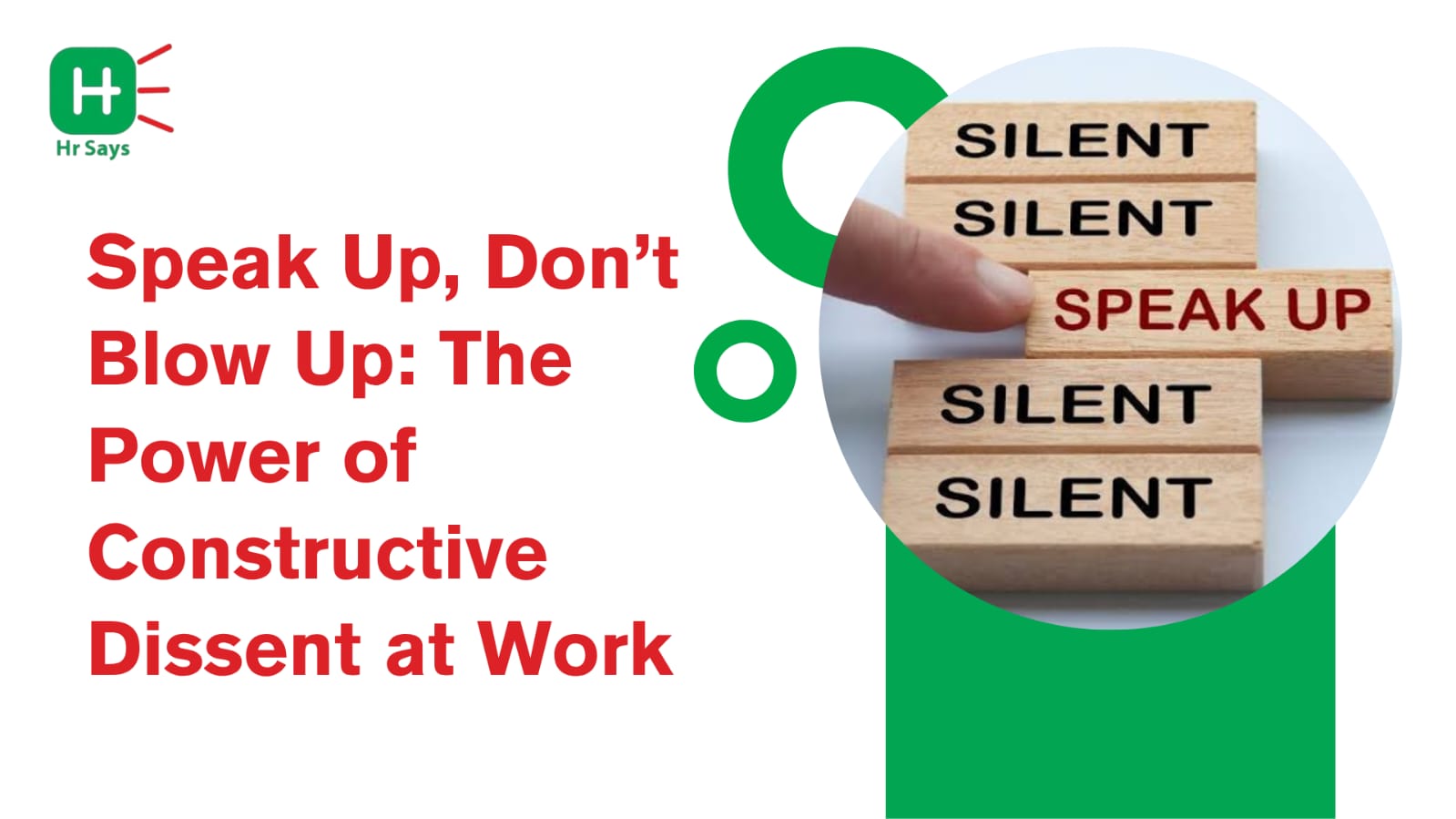Ever watched a great idea die in silence? Or worse—see a poor one sail through without challenge? The ability to speak up without blowing up is rare but vital. Let's talk about why encouraging respectful disagreement may be the healthiest habit your workplace isn’t practicing enough.
Why Dissent Scare
Dissent is not disloyalty—but it sounds that way some times.
Most employees keep quiet not because they do not want to, but because:
● Speaking up feels risky
● Hierarchies make people nervous
● Past experiences burned them
● Conflict is seen as rude or unprofessional
In many teams, silence feels safer than the truth. But in reality, avoiding dissent often leads to groupthink, missteps, and disengagement. Work becomes about harmony over honesty—and that’s where innovation goes to die.
What Constructive Dissent Really Looks Like
Constructive dissent isn’t about ego or rebellion. It’s about caring enough to question, push back, and co-create better outcomes.
The goal is clarity, not chaos.
True dissent is not loud—it’s thoughtful. It’s about ideas, not personalities. And it’s done with the intention to improve, not to win.
Signs of healthy dissent:
● Disagreements are welcomed, not punished
● Feedback focuses on issues, not individuals
● Tone remains respectful, even when views clash
● Alternative solutions are offered—not just criticisms
Building a Culture That Welcomes It
Creating a space for dissent doesn’t happen overnight. It takes intention, trust, and repeat behavior from the top down.
What leaders can do:
● Praise people for asking tough questions
● Admit mistakes publicly
● Encourage disagreement before decisions are final
● Act on dissent when it's valid
● Avoid overreacting to uncomfortable truths
What teams can do:
● Set “devil’s advocate” roles in meetings
● Use “yes, and” instead of “yes, but”
● Normalize disagreement as part of problem-solving
● Create anonymous channels for feedback
Little rituals go a long way. Even asking “What are we not seeing?” can shift the energy of a room.
The Risks of Silence
Silence may keep things smooth—but smooth doesn’t mean smart. When people bite their tongues:
● Errors go unchecked
● Leaders lose sight of ground realities
● Talented voices get drowned
● Culture becomes compliance-driven, not creative
The cost? Innovation stalls. Morale fades. And the best people eventually walk away.
Making It Stick
Constructive dissent isn’t a one-time effort—it’s a rhythm. A habit. A muscle.
Keep it alive by:
● Embedding it into feedback systems
● Training managers to listen, not just lead
● Reminding teams: You can disagree and still belong
When done right, dissent doesn’t divide—it deepens alignment. And that’s where the real magic happens.
Conclusion
In teams that last, the truth is allowed to speak—even when it’s inconvenient. Especially then. Dissent, when done right, is not noise. It's care. It’s courage. And it's the quiet backbone of strong, enduring cultures.

 Constructive dissent keeps teams sharp, honest, and innovative. When embraced, it fuels better decisions, deeper trust, and real progress—without turning conflict into chaos.
Constructive dissent keeps teams sharp, honest, and innovative. When embraced, it fuels better decisions, deeper trust, and real progress—without turning conflict into chaos.












.jpeg)
.jpeg)

.jpeg)

.jpeg)


.jpeg)

.jpeg)

.jpeg)


